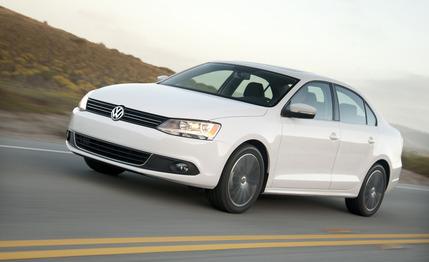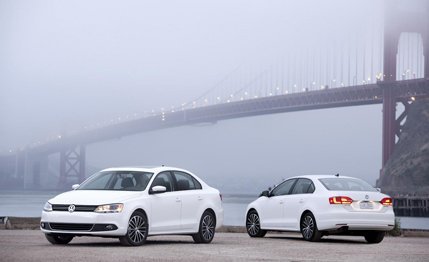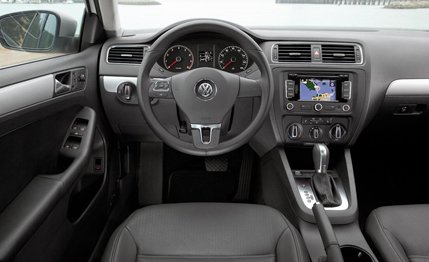
 Short Take Road Test
Short Take Road Test


For its first 30 or so years, the Volkswagen Jetta was basically a Golf wearing sedan sheetmetal (the first model also was available as a two-door). Through the ’80s and ’90s, the Jetta was a tremendous success in the States. Think about it: You probably know someone who drove—or still drives—a third-generation (1993–99) sedan, likely painted green. Soon after, the Jetta’s popularity bottomed out with the fifth-generation car, which set the mood for the new 2011 model, with European sales that numbered in the tens of, well, just the tens. Following that disappointment, VW decided the new Jetta should be dedicated to—and thus engineered and designed for—the North American market.
For starters, the Jetta is longer by 2.9 inches. Almost all of this is dumped into the rear seat, which sees a 2.7-inch increase in legroom and grows from 41 cubic feet of passenger volume to 44. The extra stretchout space makes the back seat tolerable for two adults, and comfort exceeds that of the Toyota Corolla and Honda Civic, the two bestsellers VW targeted with this latest Jetta. Unfortunately, the sheetmetal went from charming and different to bland and ordinary. Although there are elegant elements, the Jetta’s overall shape is a little too much like its competition to set it apart visually.


Deuce and a Half


Volkswagen carried over the Jetta’s 170-hp, 2.5-liter inline-five and 2.0-liter torque-busting diesel engines, as well as their accompanying transmissions (the car tested here is a 2.5-liter with a five-speed manual). With the 2.5, the Jetta scampers to the mile-a-minute mark in 8.2 seconds. That’s half a second off the pace of a Civic and 0.3 second behind a 2010 Corolla XRS fitted with the 158-hp 2.4-liter. The Vee-Dub would be quicker if it had an off button for the stability control, because as soon as the car launches, electronic safety nets quell wheelspin, killing off-the-line performance. Fuel economy gets bumped 1 mpg in the city and 3 mpg on the highway, to 23 and 33, respectively, again splitting the uprights made by the Civic (26/34) and Corolla XRS (22/30).
Ultimate lateral grip is also inhibited by stability control, at 0.85 g. That figure, though, is still better than the Honda’s or Toyota’s. It’s better, too, than the old Jetta’s, even the hot GLI variant, which goes to show what a tremendous effect tires have on handling. In place of the more sophisticated multilink rear suspension, VW fitted a cost-saving torsion-beam setup in the new Jetta.
Cheaper, but Doesn’t Drive Like It


Inside, the Jetta is neither a triumph nor a disaster of design. The seats are comfortable, but the adjustable center armrest for front passengers disappeared with the multilink. The ergonomics are fine, as is the layout, but the materials are clearly cheaper. Whereas the old Jetta had a brilliant soft-touch dash, the 2011 car’s is hard and sounds hollow when you rap your knuckles on it.
From behind the wheel, the Jetta lives up to its low-$20s price point. The hydraulic steering feels lost on-center, but the car rides and handles about as well as its predecessor did—which is to say decently. Brake feel is so-so, although performance is class-leading: The 70–0 stop takes 165 feet, significantly shorter than the class average.
Right about average is the Jetta’s base price of $15,765. That base car comes with a 115-horse four-cylinder and accelerates like a tortoise. Our range-topping SEL totaled $23,065, which is right on top of a loaded Civic.
Although the new Jetta is a satisfying effort considering VW’s cost-cutting goals, it won’t knock the Japanese off the front page of compact-car supremacy. Targeting mainstream models has brought the Jetta down a level or two and could alienate some repeat buyers looking for that familiar German feel, be that behind the wheel or visually. On the plus side, the high-performance Jetta GLI will return, packing the ubiquitous blown 2.0-liter, as well as the multilink suspension out back. We’re just hoping it has a less aggressive stability-control program, maybe even one that allows the deactivation of traction control. VW, if you haven’t picked up on it yet, give us an off button!